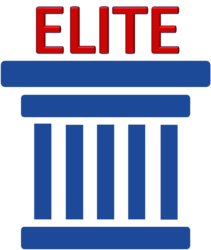Ever since the Supreme Court overturned the use of affirmative action in college admissions earlier this year, organizations have been abandoning their DEI programs and Chief Diversity Officers at an alarming rate. Is this because they’re concerned about future legal challenges from anti-affirmative action groups? Is it because they really weren’t committed to diversity? Is it because they positioned diversity and DEI programs so narrowly that they couldn’t be successful? I believe it’s a little bit of all, but mostly because of how diversity and DEI has been positioned.
Affirmative action and diversity are two very different strategies. Affirmative action is the process of hiring or admitting a person from an underserved population to better reflect the general population. Diversity, on the other hand, is about creating a representative workplace. It’s not just racial representation, but it should also focus on gender identification, ethnicity, age and physical ability. Representation leads to thought diversity as the organization is able to draw on experiences from different groups to create better solutions. This is the direct opposite of groupthink, where everyone has the same perspective and arrives at the same conclusion most of the time. Organizations should want these differences to help better define a problem or situation and develop a more refined and inclusive solution.
Unfortunately, many groups have come to equate diversity with affirmative action which has led to attacks on these programs across the country. Organizations and even DEI leaders have allowed these attacks to occur because of how the programs have been positioned.
Diversity is needed for business success. If they want to sell their products or services in multi-cultural markets, they need diversity. If they have gender or age specific products, they need diversity. If they need to understand the nuances between the individual factions of what appears to be a homogenous ethnic group, they need diversity. No matter how brilliant a person is, they cannot fully understand the experiences of a person who has lived it all their life. That is why corporations like McDonald’s and Coca-Cola turned to specialized advertising agencies to help them improve sales in urban markets in the 1970s and 1980s.
An example of the diversity in action from my career was a project I worked on for Pharmacia when their Rogaine product was going over the counter. My team was tasked with analyzing a database of people who had purchased prescription Rogaine. At the time, Rogaine was targeted as a product for men, but we discovered that 15% of the people purchasing the product were women. We couldn’t tell if they were purchasing it for themselves or for someone else, but that information resonated with the client team who realized that women also have a balding problem. About 80% of men have a balding problem, while about 30% of women have a balding problem. That led to the launch of Rogaine for Women, which was packaged in a pink box, while Rogaine for Men was packaged in a blue box, but with completely different marketing campaigns. At the launch, the products were the exact same formulation. Since then, the men’s product has been strengthened.

In the Rogaine case, my team provided the information that illuminated an opportunity to the client team which was brought to everyone’s attention. They then shifted to take advantage of it with a focused marketing campaign, to capitalize on sales they may have missed. Everyone contributed something.
Lack of diversity is present in organizations when opportunities are overlooked, or questionable decisions are made. We’ve all seen commercials that could be construed as offensive or just plain ‘tone deaf’ (Google Kendell Jenner Pepsi ad or the Dylan Mulkaney Bud Light ad). I have a presentation I use in my marketing classes that examines domestic and international marketing failures. Most are related to language and/or cultural misunderstandings. In the class we discuss, “Why didn’t anyone catch these mistakes before the company spent millions on advertising.” Maybe there was someone in “the room where it happened” and didn’t speak up or if they did, weren’t listened to. Those are equity and inclusivity issues which will be addressed later.
Universities are another area that could benefit from diversity. Most people grow up in neighborhoods with people who look like them or think like them. In one of my university leadership classes, we were studying Martin Luther King Jr.’s leadership qualities. I had a student tell us how much he enjoyed learning about MLK because he wasn’t aware of all the things he did. That was in a class this century.

Diversity of experience makes classroom discussions, and online discussion boards, very enlightening for students and even the professor. Some of my favorite online class experiences are when there is a mix of domestic and international students. Diversity of experience is why many of the top graduate business schools won’t accept students without work experience. Without any work experience, they have little to contribute to class discussions.
Once you have a diverse workforce, the organization needs to address the ‘E’ and the ‘I’ of DEI. Equity refers to the fair treatment of all people in the organization so that everyone is treated fairly. It takes into consideration a person’s unique circumstances and adjusts accordingly. Inclusion is a cultural issue, where everyone expects to have a voice and their voice actually listened to. Equity and inclusion are often the causes of marketing or other business mistakes. Either the right perspective wasn’t present when the decision was made, or they didn’t feel comfortable stating a contrary opinion. Keep in mind though, there’s a reason diversity is the first letter of DEI. Equity and Inclusion can’t be achieved without Diversity.
Diversity has an impact on the organization’s bottom line. Research by McKinsey supports this with data that indicates companies with executive teams in the top quartile for gender diversity were 25% more likely to have above-average profitability. This gap increases with higher gender diversity. On the other hand, companies with higher ethnic and cultural diversity outperformed their counterparts by 36%.
Now is not the time to scale back or eliminate your diversity programs and DEI initiatives. Its benefits far outweigh the any financial pressures an organization may be facing. The question you should be asking yourself is whether or not your DEI initiatives are properly positioned within your organization. If it’s only framed as achieving affirmative action, you will receive internal and external pushback. If properly positioned and communicated, you will enjoy much success financially and supportive employee sentiment.




One Reply to “What Most People Get Wrong About Diversity & DEI”